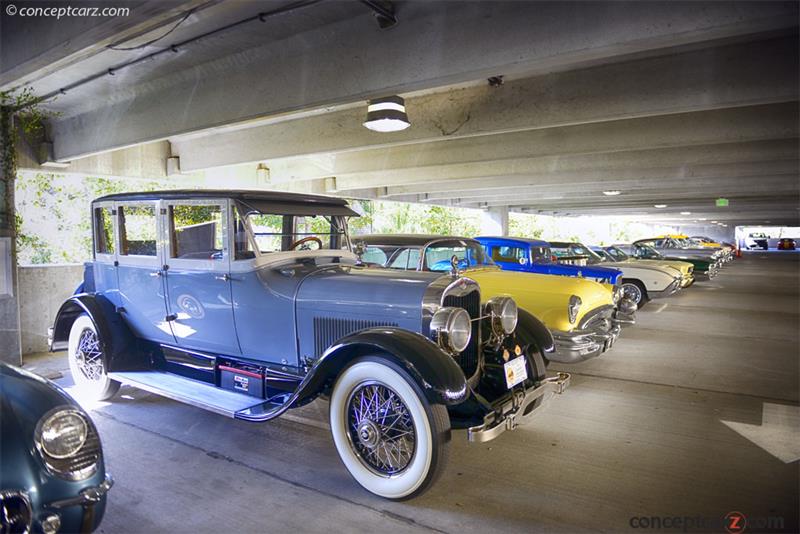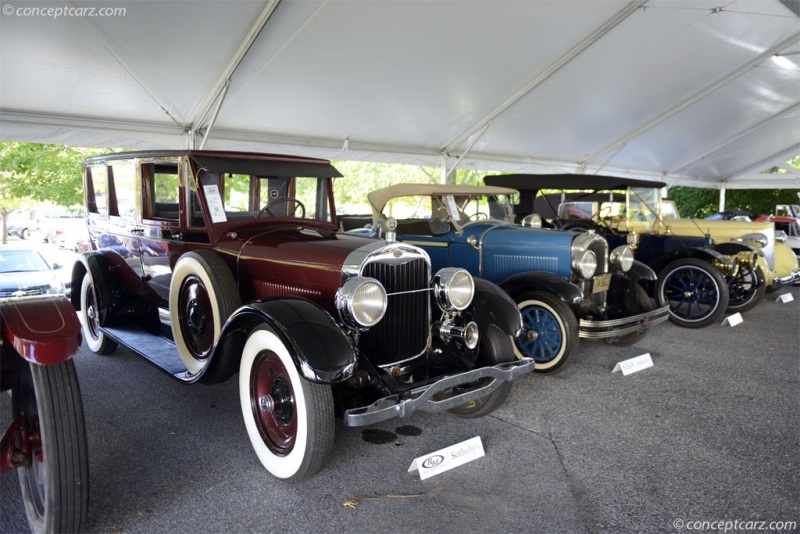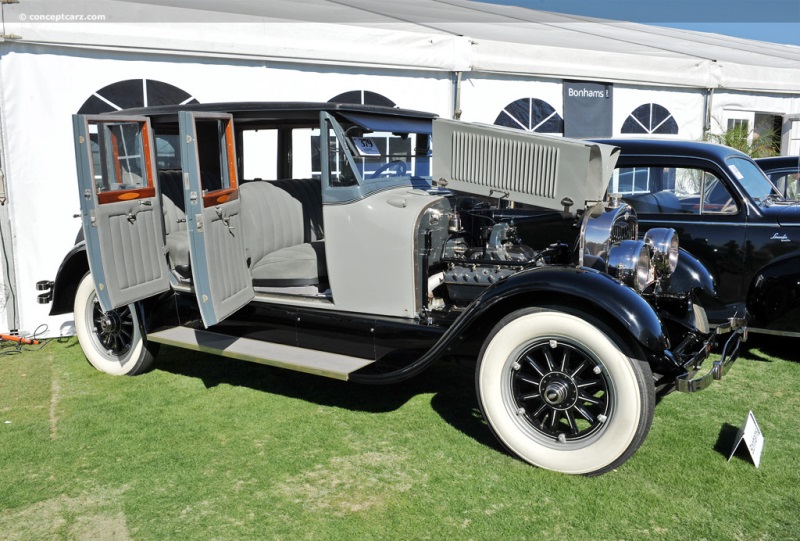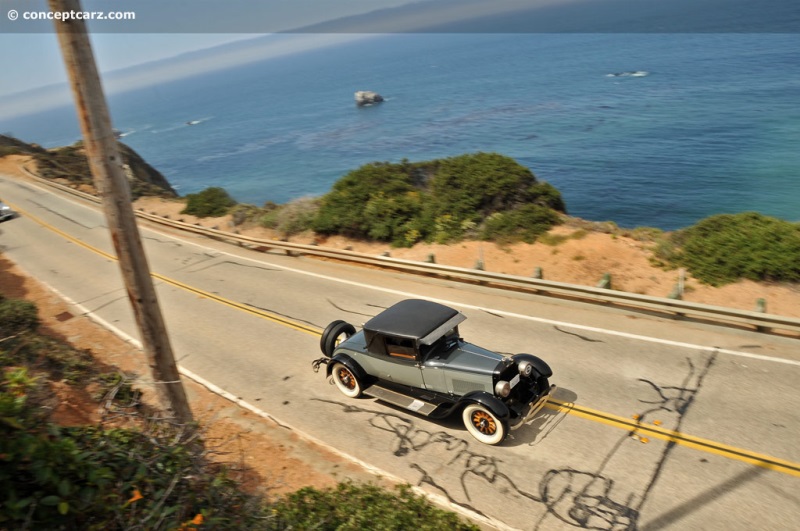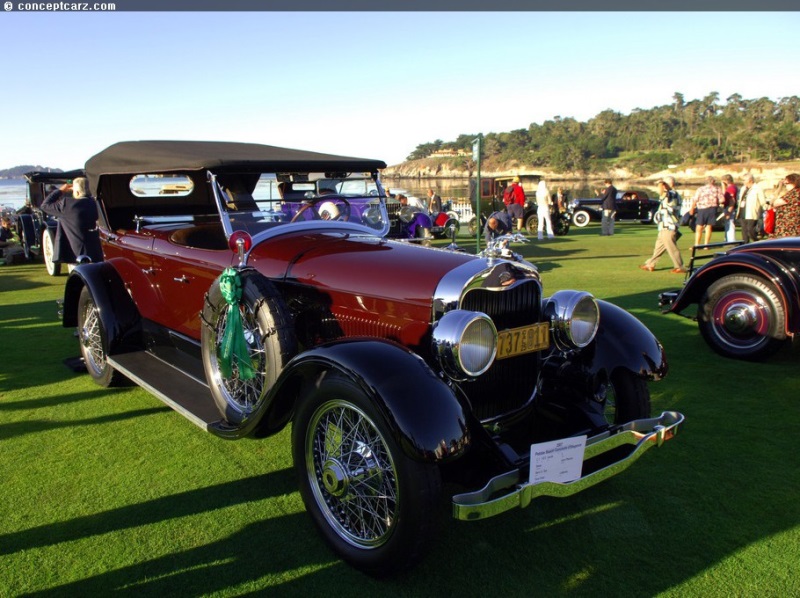Henry M. Leland was a machinist, inventor, and businessman who had an important and far-reaching influence on the American automotive marketplace. His skills as a machinist were fine-tuned in the firearms industry and helped him become a leading-edge automobile developer during the turn of the 20th century, applying many of the lessons learned in the firearms business to the automobile, most importantly, the use of interchangeable parts. The machine shop, Leland & Faulconer, became a supplier of engines to Ransom E. Olds's Olds Motor Vehicle Company, later to be known as Oldsmobile. 
Berline by JudkinsIn 1902, the Henry Ford Company enlisted his skills to appraise their assents prior to liquidation. Henry Ford left the company, along with several key partners, in March of 1902 following a dispute with his investors. The financial backers, William Murphy and Lemuel Bown enlisted Leland, who provided the appraisal and suggested they reorganize and build a car based on an engine Leland supplied to Olds. A new company was created on August 22nd of 1902, called the Cadillac Automobile Company, using the Henry Ford Company factory at Amsterdam Avenue and Cass Street. In 1905, the Cadillac Company merged with Leland & Faulconer Manufacturing and quickly established a reputation for precision engineering. They became the first volume manufacturer to offer a fully enclosed car, in 1906, and in 1908 they participated in the interchangeability test in the United Kingdom and were awarded the Dewar Trophy for the most important advancement of the year in the automobile industry. In 1909, Cadillac was sold to General Motors, but Leland remained in charge. In 1912, he headed the development of the electric self-starter alongside Charles Kettering.In 1916, Leland left Cadillac following a dispute over the production of Liberty Aircraft engines, and subsequently founded another American luxury marque, Lincoln, named after the president for whom he had first voted in 1864. This company was not initially intended for automobile production, instead, it built Liberty engines for a government contract. After a brief period, the Armistice came to a close, prompting Leland to switch to automobile production.Henry Leland's first model since he formed Lincoln Motor Company following his contentious departure from Cadillac was the Model L. It was introduced in 1917 and wore bodies designed by Leland's son-in-law, Angus Woodbridge, who had been trained as a lady's hat maker. The mechanical aspects of the Lincoln benefitted from Leland's expertise and experience, using precision engineering with rugged and compact components. They were powered by a 60-degree V8 engine with fork-and-black connecting rods, full-pressure lubrication, a large torque tube drive, and initially developing 81 horsepower. The coachwork, however, was stodgy and dated. Coupled with the post-World War I recession, the company soon experienced difficult financial times, prompting Leland to sell Lincoln to Henry Ford in 1922 for $8 million. 
Coupe by Judkins
Chassis #: 24905
Engine #: 24905
View info and history
Auction entries : 1Henry Ford's Model T was America's best-selling automobile thanks to its durability, practicality, and affordability. He dominated the low-priced market, and with the Lincoln, Henry Ford hoped to do the same to the luxury car segment. Henry Leland left after four months, and Mr. Ford assigned his own son Edsel to head the new division. Edsel was more than just a successor to the Ford fortune, he was a talented designer who understood the importance of style on a high-end automobile. He created new designs for the L-series, streamlined the production process, improved handling with the addition of hydraulic shock absorbers, and turned Lincoln into a profitable business in less than a year. By 1925, the Model L was devoid of cowl lights, wore a new nickel-plated radiator shell, factory-installed bumpers, and had a Gorham-produced greyhound radiator ornament. The radiator ornament began as an optional but was adopted as standard during the year. The steering ratio of 12.67:1 was replaced during the year with a 15:1 ratio, and the emergency brake lever was improved. The 60-degree, L-head V8 engine continued to displace 357.8 cubic inches, used mechanical valve lifters, three main bearings, a Stromberg updraft carburetor, and delivered 90 horsepower at 2,800 RPM. It was backed by a three-speed sliding gear manual transmission with floor shift controls and multiple disc, dry plate clutch. Mechanical brakes on two wheels provided the stopping power, although Lincoln's built for the Police used four-wheel brakes. The Lincoln automobiles were offered in a wide array of factory and custom bodies. External coachbuilders included Brunn, LeBaron, Holbrook, Dietrich, and Judkins. Prices ranged from the high $3,000s to the upper $6,000s (or more depending on coachwork, options, and trim). Optional equipment included disc wheels, Rudge-Whitworth wire wheels, painted radiator shell, side-mount covers, natural wood finish wheels, and dual side-mount spares. During 1925, 8,451 examples of the Lincoln were built, an increase over the 7,053 produced in 1924, and similar to the 8.787 produced in 1926. Similar production figures continued through the remainder of the 1920s before dropping to 3,515 in 1930 due to the Great Depression. Lincoln production would soldier on through the mid-1930s with production below 4,000 units annually. In 1936, the unibody-built Lincoln Zephyr was introduced, with modern and aerodynamic styling that quickly caught the attention of consumers, and nearly 15,000 examples were sold that year, along with 1,515 of the top-of-the-line Model K. The Zephyr was joined by the Continental in 1940 which would continue to define the styling used through the 1940s (sans the World War II years).
by Daniel Vaughan | Nov 2020
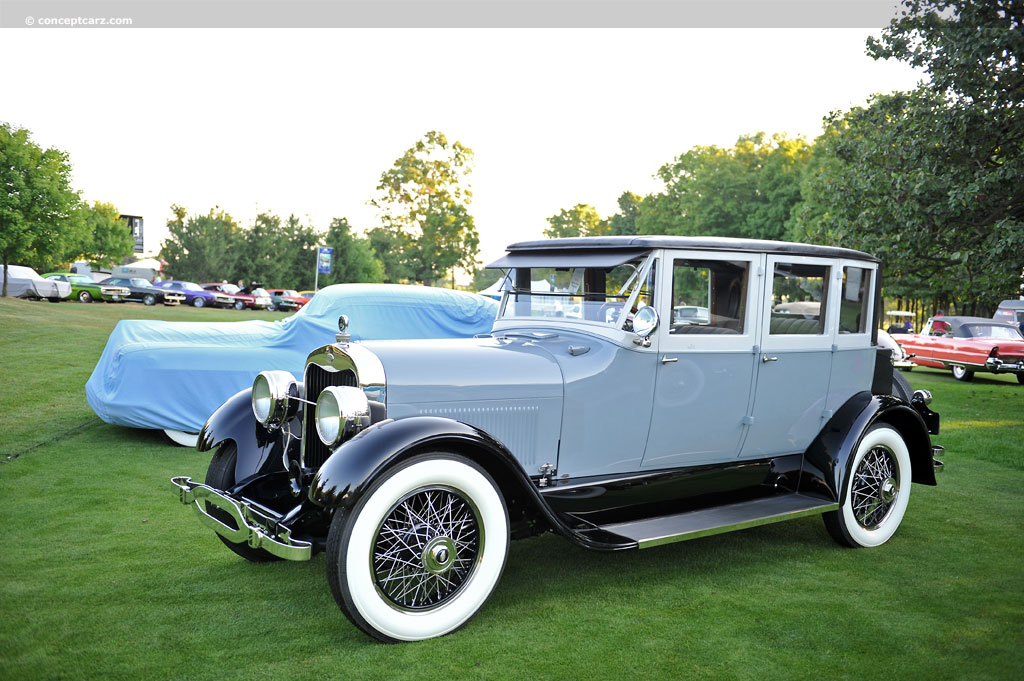
Berline by Judkins
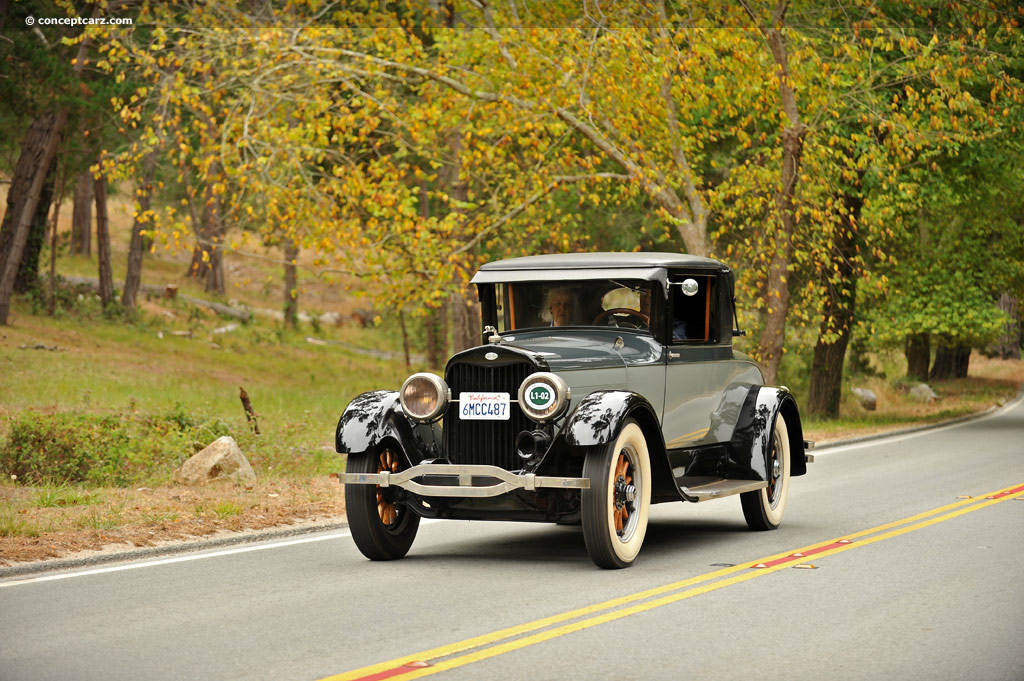
Coupe by Judkins
Chassis #: 24905
Engine #: 24905
View info and history
Auction entries : 1
by Daniel Vaughan | Nov 2020
Related Reading : Lincoln Model L History
The Lincoln Motor Company was founded in 1917 by Henry M. Leland and acquired by Ford in 1922. Leland, one of the founders of Cadillac, had left Cadillac during the First World War to form the Lincoln Motor Company, which was intended to build Liberty aircraft engines. He had left Cadillac due to a disagreement with General Motors boss William C. Durant. When Leland left, he was 74 years old, and....
Continue Reading >>
Continue Reading >>
Related Reading : Lincoln Model L History
Considered to be one of the most elegant of chauffer-driven automobiles of the 1920s, the Lincoln Model L Towncar was introduced in 1924. The Model L was an exclusive portrayal of the brand that represents everything that embodies American Luxury, Lincoln. Founded by Henry M. Leland in 1917, Lincoln Automobiles were operated under the Ford Motor Company. LeLands favorite President had always been....
Continue Reading >>
Continue Reading >>
Similarly Priced Vehicles
1925 Lincoln Model L Vehicle Profiles
Recent Vehicle Additions
Performance and Specification Comparison
Price Comparison
Model L Specification Comparison by Year
Year
Production
Wheelbase
Engine
Prices
Related Automotive News

Past Best of Show Winners at The Pebble Beach Concours d'Elegance
overview1
The 70th anniversary of the Pebble Beach Concours dElegance was celebrated with a spectacular display of previous Best of Show winners. Thirty-seven examples graced the showfield and many were still with the same owners who raised the trophy...

FCA US Product Design Office Announces Winners Of The 2018 Drive For Design Contest
Three U.S. high school students selected from across the nation win contest
Winning students receive exclusive look inside a day-in-the-life of FCAs Product Design Office
Prizes also include a two-week summer automotive design course at Lawrence...

RM Auctions Amelia Island Preview - 2014
0
RM Auctions, the worlds largest auction house for investment-quality automobiles, will hold its Amelia Island, Florida, sale on March 8th at the Ritz-Carlton.
As the official auction house of the Amelia Island Concours dElegance, RMs...

63rd Pebble Beach Concours d'Elegance Names 1934 Packard 'Best of Show'
The competition showcased 248 cars, including 48 from abroad
PEBBLE BEACH, Calif. (August 18, 2013) -- A 1934 Packard 1108 Twelve Dietrich Convertible Victoria owned by Joseph and Margie Cassini III of West Orange, New Jersey, was named Best...

Lincoln at Los Angeles Auto Show Press Days: Celebration of Its Past and Future As Brand Rolls Out Its Reinvention
The brand pays tribute to its heritage today, displaying seven of the most influential Lincoln designs
Thursday sees a display full of the all-new MKZ premium midsize sedan and MKZ Hybrid, the future of Lincoln, on the Lincoln stand
Lincoln launches...


























